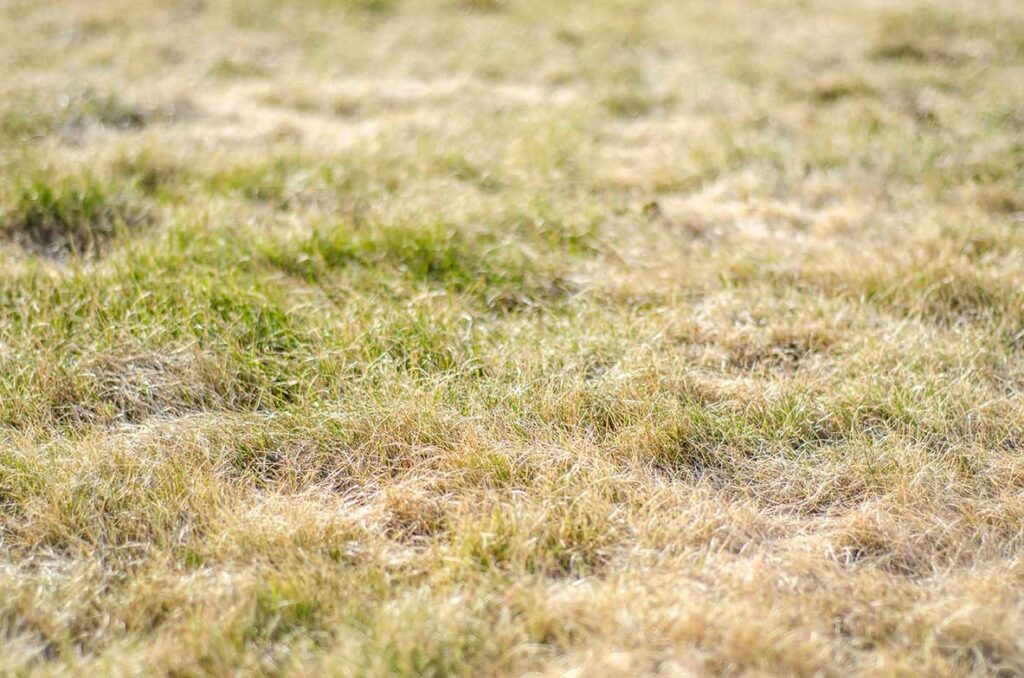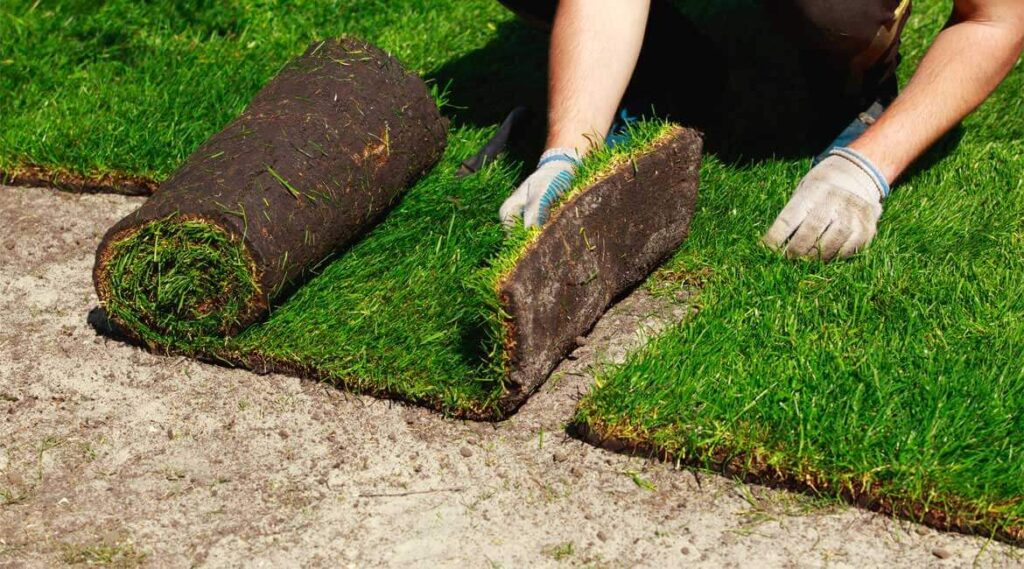The weather is nice and warm! Have you noticed a gradual yellowing of your lawn? It has most likely run out of water and gone dormant to protect itself! In this article, our experts explain how to get your lawn back on its feet and give you some tips on how to prevent water shortages next time.
How do I know when my lawn lacks water?
When a lawn starts to dry out, it becomes darker. At this point, you can see your footprints after walking on it, as it is dehydrated. If the dryness continues, the grass could turn completely yellow or orange and look dead to you. Rest assured, when a lawn is exposed to a long period of drought, it goes into a state of dormancy to protect itself from the lack of water and nutrients… but it is not dead!
How do you fix the problem?
To get your lawn back on its feet after a lack of water, you’ll first need a good watering for a few hours. A good rain would certainly do it a lot of good. If the rain is late and municipal regulations permit, water your lawn thoroughly, once or twice a week, until it turns green again.
If possible, water early in the morning. If you do it in the middle of the day when the sun is already high, you will lose a lot of water through evaporation. Conversely, watering too late in the evening can encourage the spread of leaf diseases. Remember, you should never mow your lawn during a heat wave, as this can put too much stress on the lawn and make the situation worse.
Even after rehydration, some patches of your lawn may not have survived the water stress. They will need to be repaired. See our article How to Repair Dead Sod in the Spring to find out how.
How to prevent a water shortage?
The advice to prevent a lack of water is to keep your lawn healthy. A fertilized, well-maintained lawn is thicker and has strong, deep roots that help it draw water from the soil.
Also consider keeping your lawn longer during the summer season. A height of 8 cm is recommended from late June to mid-August. The longer the lawn, the longer the roots are in the soil and have access to the available water.
Most importantly, if you can: water properly and regularly! Your lawn needs 3 to 4 cm of water per week. However, be sure to follow your municipality’s watering regulations.
If you notice an unusual change on your lawn or if you have any questions about watering, don’t hesitate to contact your Nutrite Expert, your ally for a durable and healthy lawn!




